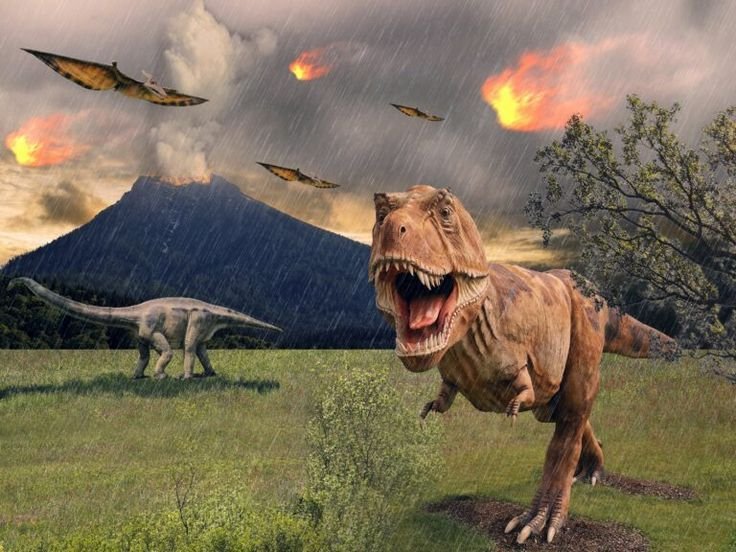Introduction
The extinction of dinosaurs remains one of the most intriguing mysteries in history. Over 65 million years ago, these magnificent creatures dominated Earth, occupying diverse habitats and evolving into various species. Yet, their reign ended abruptly, leaving scientists to piece together what led to their sudden disappearance. While there are several theories, the asteroid impact hypothesis, volcanic eruptions, and climatic shifts are some of the most widely accepted explanations. Let’s dive into the main theories behind the extinction event and explore the evidence supporting each.
1. The Asteroid Impact Hypothesis

The asteroid impact hypothesis is the most widely accepted explanation for the mass extinction of dinosaurs. Proposed in the 1980s, this theory suggests that a massive asteroid collided with Earth, creating catastrophic consequences.
Evidence of the Asteroid Impact
Scientists have discovered a unique layer of iridium, a rare metal, around the world in geological layers dating back to the dinosaur extinction. Iridium is abundant in asteroids but rare on Earth, suggesting that an extraterrestrial object struck the planet. Further proof comes from the Chicxulub Crater on Mexico’s Yucatán Peninsula, a massive impact site that aligns with the timing of the extinction event.
Impact on the Ecosystem
The asteroid impact would have released enormous amounts of dust and sulfur into the atmosphere, blocking sunlight and causing global temperatures to plummet. Plants could not photosynthesize, leading to a collapse in the food chain. As a result, dinosaurs, dependent on this ecosystem, perished along with many other species.
2. Massive Volcanic Eruptions

In addition to the asteroid hypothesis, the volcanic activity hypothesis is another plausible explanation for the dinosaur extinction. During this time, intense volcanic eruptions were happening in present-day India, known as the Deccan Traps.
Evidence Supporting Volcanic Activity
The Deccan Traps’ volcanic eruptions were vast, spewing lava over large areas and releasing toxic gases such as carbon dioxide and sulfur dioxide into the atmosphere. These gases would have caused severe climate change, contributing to acid rain and altering global temperatures.
Environmental Consequences
The eruptions likely created a prolonged “volcanic winter” scenario, where sunlight was partially blocked due to thick ash clouds, lowering global temperatures. This situation would have been particularly disastrous for dinosaurs, which relied heavily on stable environmental conditions to survive.
3. Climate Change and Gradual Ecological Shift

While the asteroid and volcanic theories suggest sudden, catastrophic events, some scientists believe that gradual climate change and ecological shifts contributed to the extinction over an extended period.
Changes in Sea Levels and Vegetation
In the Late Cretaceous Period, changes in sea levels and fluctuating temperatures were already stressing ecosystems. Dinosaurs depended on specific environments and food sources. Rising sea levels reduced available land, and altered vegetation patterns made it challenging for herbivorous dinosaurs to find sustenance, indirectly impacting carnivorous species as well.
Evidence of Gradual Decline
Fossil records show a decline in dinosaur diversity before the asteroid impact, suggesting that they may have been struggling due to these environmental shifts. Although this gradual decline didn’t directly cause the extinction, it likely weakened dinosaur populations, making them more vulnerable to sudden catastrophic events like the asteroid impact.
Conclusion
The extinction of dinosaurs likely resulted from a combination of factors rather than a single cause. The asteroid impact theory remains the most supported hypothesis, given the iridium layer and the Chicxulub Crater. However, volcanic eruptions and gradual climate shifts also played significant roles in destabilizing ecosystems and paving the way for the eventual extinction. Today, studying these factors helps scientists understand how mass extinctions occur, giving us insight into preserving modern ecosystems from similar catastrophic events.





